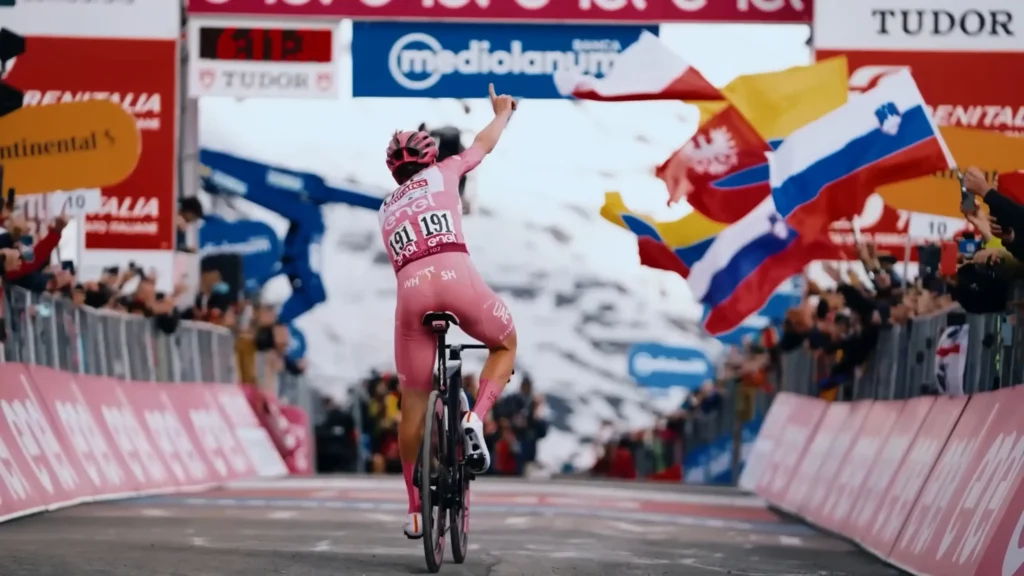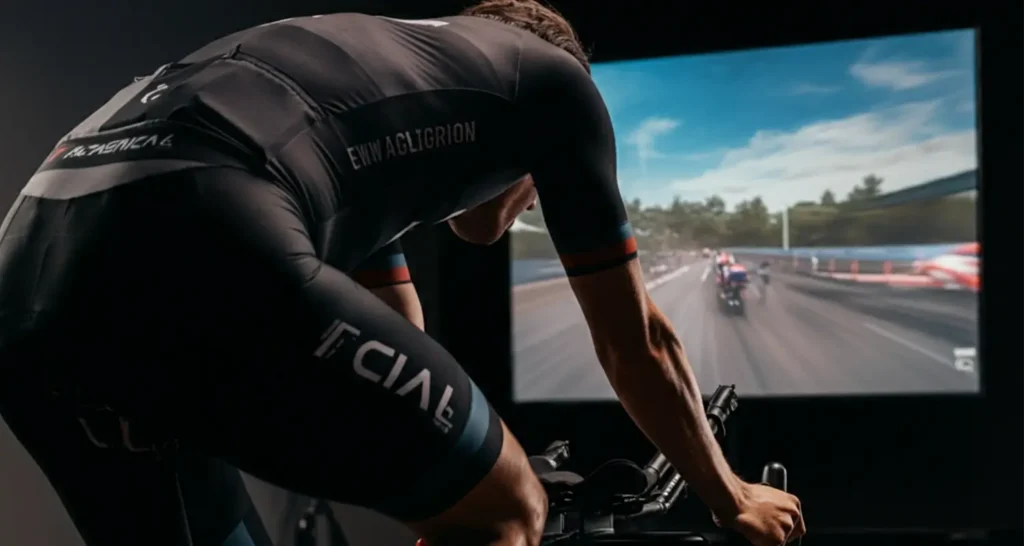
| Performance Area | Tour de France Strategy | Triathlon Application |
|---|---|---|
| Nutrition | Precision carbohydrate periodization and recovery protocols | Session-specific fueling with systematic recovery nutrition |
| Training Structure | Methodical base-build-peak periodization | Systematic phase progression with discipline integration |
| Strength Development | Targeted power and stability enhancement | Functional strength for multisport performance |
| Tactical Execution | Energy conservation and strategic timing | Intelligent pacing with transition optimization |
| Weakness Management | Systematic limiter identification and targeting | Performance analysis with focused improvement protocols |
| Recovery Systems | Mandatory rest and restoration protocols | Structured recovery as performance enhancement |
| Mental Performance | Resilience development and competitive confidence | Comprehensive mental skills for multisport demands |
How Elite Cycling’s Greatest Stage Race Can Transform Your Multisport Performance
The Tour de France represents far more than a three-week cycling spectacle—it’s a high-performance laboratory where the world’s most advanced training methodologies are tested under extreme competitive pressure. While you watch riders conquer Alpine passes and sprint through Parisian streets, an exceptional opportunity presents itself. These champions employ revolutionary strategies that can directly transform your triathlon approach.
This comprehensive technical analysis details seven fundamental strategies utilized by Tour de France teams, specifically adapted for modern triathlon demands. Each methodology has been validated through years of elite-level competition and can be immediately integrated into your training program to deliver measurable performance gains.
Lesson 1: Master Strategic Nutrition Timing
Tour de France Application
Professional cycling teams have revolutionized fueling protocols through precision carbohydrate periodization and rapid recovery nutrition systems. Elite riders consume up to 90 grams of carbohydrates per hour during stages, with meticulously timed intake to prevent glycogen depletion and accelerate adaptation.
Triathlon Implementation Strategy
Transform your nutritional approach by implementing session-specific fueling protocols:
Pre-Training Optimization:
- Consume 1-4g carbohydrates per kg body weight 1-4 hours before intense sessions
- Adjust timing based on session duration and intensity targets
During Training/Racing:
- Aim for 30-60g carbohydrates per hour for sessions exceeding 60 minutes
- Utilize multiple carbohydrate sources (glucose + fructose) for enhanced absorption
Recovery Acceleration:
- Consume 1.2g carbohydrates per kg body weight within 30 minutes post-exercise
- Combine with 20-25g high-quality protein for optimal muscle protein synthesis
Lesson 2: Execute Systematic Periodization
Tour de France Application
Championship teams structure entire seasons through methodical periodization phases: extensive aerobic base development (October-February), intensive build phases (March-May), and race-specific peak preparation (June-July). This systematic approach ensures optimal physiological adaptations at precisely the right moments.
Triathlon Implementation Strategy
Structure your training year through deliberate phases:
Base Phase (12-16 weeks):
- Develop aerobic capacity through high-volume, low-intensity training
- Focus on technical skill development across all three disciplines
- Build structural strength and injury prevention foundations
Build Phase (8-12 weeks):
- Introduce lactate threshold and VO₂max interval training
- Incorporate race-specific brick sessions and transition practice
- Progressively increase training stress and specificity
Peak Phase (4-6 weeks):
- Refine race-day pacing strategies and equipment selection
- Practice nutrition and hydration protocols under race conditions
- Taper systematically while maintaining neuromuscular sharpness
Lesson 3: Develop Functional Strength Systems
Tour de France Application
Elite cyclists dedicate 2-3 sessions weekly to targeted strength development, focusing on power transfer efficiency and injury prevention. Programs emphasize compound movements, unilateral training, and sport-specific force production patterns.
Triathlon Implementation Strategy
Integrate systematic strength training to enhance multisport performance:
Lower Body Power Development:
- Squats and deadlift variations for cycling power transfer
- Single-leg exercises for running economy and injury prevention
- Plyometric progressions for neuromuscular power
Core Stability Enhancement:
- Anti-extension and anti-rotation exercises for swimming efficiency
- Dynamic stability training for cycling position maintenance
- Running-specific core endurance protocols
Programming Guidelines:
- 2-3 strength sessions per week during base phase
- Maintain 1-2 sessions during build and peak phases
- Periodize intensity and volume alongside endurance training
Lesson 4: Implement Tactical Intelligence
Tour de France Application
Professional teams excel through strategic energy conservation, precise attack timing, and collaborative tactical execution. Riders conserve energy in pelotons, time attacks for maximum impact, and coordinate team strategies for optimal outcomes.
Triathlon Implementation Strategy
Apply tactical thinking to optimize race execution:
Energy Conservation Principles:
- Draft legally when permitted to reduce energy expenditure by 20-40%
- Pace conservatively during swim and bike to preserve running capacity
- Identify course segments for strategic effort distribution
Transition Optimization:
- Practice T1 and T2 procedures until automatic
- Organize equipment for seamless transitions
- Develop race-day contingency protocols
Pacing Strategy Development:
- Establish target power/pace zones for each discipline
- Practice negative splitting techniques in training
- Develop environmental adaptation strategies (heat, wind, elevation)
Lesson 5: Target Performance Limiters
Tour de France Application
Elite riders systematically identify and address performance weaknesses. Sprinters dedicate significant training to climbing efficiency, while climbers develop time-trial capabilities and sprint power. This targeted approach transforms weaknesses into competitive advantages.
Triathlon Implementation Strategy
Conduct honest performance analysis and target limiters:
Assessment Protocol:
- Analyze race splits and training data to identify relative weaknesses
- Conduct discipline-specific testing (swim TT, FTP test, run threshold)
- Prioritize limiters with greatest performance impact potential
Targeted Improvement Strategies:
- Swimming Limiters: Open water skills, sighting technique, pack swimming
- Cycling Limiters: Aerodynamic position, power sustainability, technical handling
- Running Limiters: Run-off-bike efficiency, pacing consistency, heat management
Implementation Framework:
- Allocate 20-30% additional training time to primary limiter
- Incorporate limiter-specific sessions 2-3 times weekly
- Monitor progress through regular testing and race analysis
Lesson 6: Optimize Recovery Protocols
Tour de France Application
Recovery represents a critical performance component in Tour competition. Teams employ systematic recovery protocols including massage therapy, compression techniques, sleep optimization, and active recovery sessions to maintain performance across three weeks of intense competition.
Triathlon Implementation Strategy
Treat recovery as a trainable component of performance:
Sleep Optimization:
- Target 7-9 hours nightly with consistent sleep/wake times
- Create optimal sleep environment (temperature, darkness, quiet)
- Minimize screen exposure 2 hours before bedtime
Active Recovery Integration:
- Schedule 1-2 easy aerobic sessions weekly
- Incorporate mobility and flexibility work daily
- Utilize recovery modalities (massage, compression, cold therapy)
Training Load Management:
- Monitor training stress through objective metrics
- Implement planned recovery weeks every 3-4 weeks
- Recognize and respond to overreaching symptoms promptly
Lesson 7: Cultivate Mental Resilience
Tour de France Application
The Tour demands extraordinary mental fortitude as riders overcome physical suffering, tactical setbacks, and competitive pressure. Champions develop systematic mental skills including goal setting, process focus, adversity management, and competitive confidence.
Triathlon Implementation Strategy
Develop comprehensive mental performance skills:
Process-Oriented Goal Setting:
- Establish outcome, performance, and process goals for each season
- Focus on controllable performance factors during competition
- Develop pre-competition routines for optimal mental state
Adversity Management:
- Practice problem-solving scenarios in training
- Develop coping strategies for common race challenges
- Build confidence through progressive challenge exposure
Competitive Mindset Development:
- Visualize successful race execution regularly
- Practice positive self-talk and motivation strategies
- Learn from setbacks through structured analysis and adaptation
Performance Transformation Protocol
The Tour de France demonstrates that exceptional performance results from systematic excellence rather than random suffering. These seven strategic principles represent proven methodologies for achieving breakthrough triathlon performance.
Your implementation strategy should progress systematically: begin with foundational elements (nutrition and recovery), develop through structured training periodization, and refine through tactical and mental performance enhancement. Each component builds upon the others to create comprehensive performance transformation.
The path to your personal breakthrough lies not in training harder, but in training with the strategic intelligence of Tour de France champions. Apply these methodologies consistently, monitor your progress systematically, and prepare to discover performance levels you previously considered impossible.
